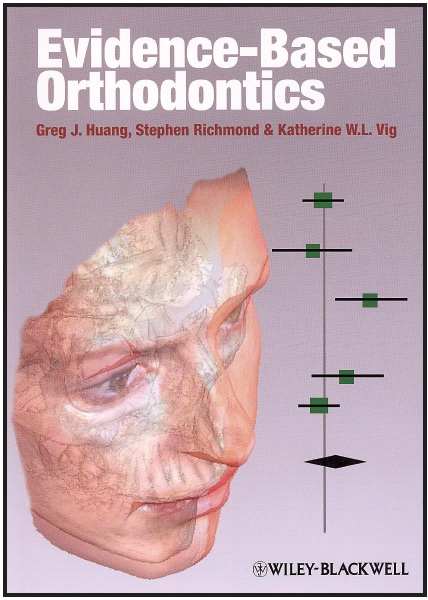GREG J. HUANG, DMD, MSD, MPH;
STEPHEN RICHMOND, BDS, DOrth RCS, MSD, FDS RCS, PHD, FHEA; and
KATHERINE W.L. VIG, BDS, MS, DOrth RCS, FDS RCS, Editors
348 pages. $89.99. 2011.
Wiley-Blackwell, 111 River St., Hoboken, NJ 07030.
(800) 225-5945; www.wiley.com.
Understandably, there have been few texts devoted entirely to the subject of evidence-based orthodontics (EBO). The relatively recent development of evidence-based dentistry, as extrapolated from treatment concepts in medicine, has only recently had an impact on orthodontic education--with even less influence on clinical practice. That makes this an important text that should interest academics, orthodontic students, and practitioners alike. The editors not only address clinical strategies, but also present well-founded and often critical perspectives of the entire EBO philosophy.
The first three chapters describe the historical development of EBO, reviewing the principles of research design and providing important tools for electronic searches of clinical trials. The remaining chapters apply modern EBO to a number of orthodontic topics, including Class II and Class III treatment, retention, self-ligating appliances, Invisalign, demineralization of enamel during treatment, and external root resorption as a consequence of orthodontic therapy. Each chapter includes supporting evidence (of varying quality) and references that should be helpful to those engaging in further study.
Evidence-Based Orthodontics, although clearly and succinctly written, is not intended to be an easy read. The clinician will inevitably be drawn into the critical-thinking process as it relates to decisions made at the chair. But the reader should not be disappointed when the available evidence for certain procedures is limited in value. Individual chapter authors, to their credit, carefully and accurately evaluate the clinical applicability of the evidence presented for each technique.
This text, like the entire subject of EBO, should be considered an evolutionary effort. The editors and contributing authors appear to understand the relative infancy of this potentially valuable process, as well as the controversies that might exist in assessing and applying any valid information to individual patients. They are also well aware of the possible misuses of EBO, often expressing caution about how the interpretation of even the highest-quality clinical trials should be balanced against the orthodontist's own experience and patient values.
Similar articles from the archive:
- BOOK REVIEWS Goal-Directed Orthodontics March 2014
- BOOK REVIEWS Integrated Clinical Orthodontics September 2012
- BOOK REVIEWS Contemporary Orthodontics May 2003

All in all, this is a remarkable book that needs to be read. It compels the clinician to examine competing orthodontic treatment strategies and offers valuable insight into the research basis of such methods. Equally important, the authors have identified many potential investigations into the questions that we all need to have answered before we can expect more favorable treatment and retention outcomes in our practices.
ELLIOTT M. MOSKOWITZ, DDS, MSD

